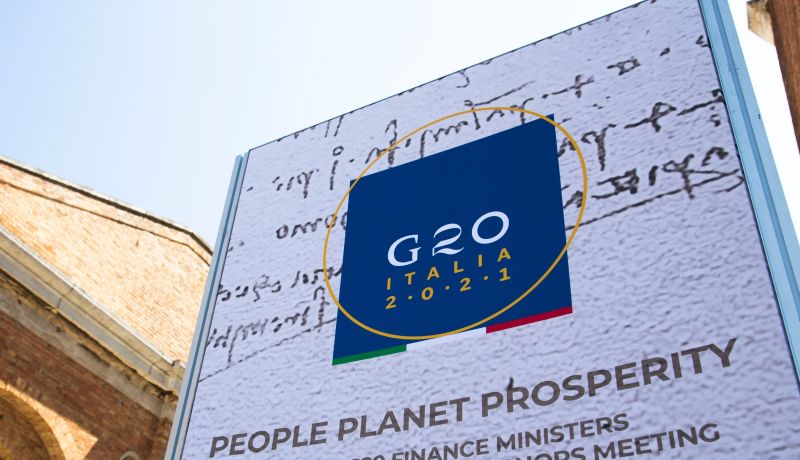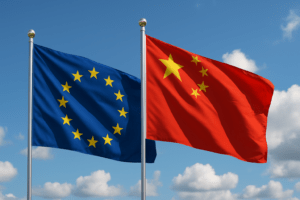Italy’s Mario Draghi has kept climate change firmly centre stage in this year’s G20 formation, alongside coordination on COVID health and economic responses. It’s a wise choice – a good outcome on climate action is a key opportunity for countries to demonstrate effective multilateralism and global cooperation. Climate action can be a rare area of alignment in a sea of geopolitical tensions.
What the G20 delivers on climate is also key to demonstrating that the world’s largest economies are serious to respond to the scientists’ “Code Red” warning on the state of the climate and to the youth’s and most vulnerable countries’ “Code Red” call for intergenerational justice and solidarity ahead of COP26. What we need from the Rome Leaders’ Summit are new commitments and a strong mandate for COP26 to agree “a Glasgow Package” that goes faster in a more just and inclusive way. In practical terms this means concrete progress towards closing the gaps to a 1.5°C pathway across emissions reduction – without higher targets the world is set to increase emissions by 16% in 2030 instead of reducing them by 45% compared to 2010 in order to keep 1.5 within reach – adaptation and finance, and addressing the long-overdue issue of loss and damage.
Climate commitments from the G20 will be key to providing global confidence and momentum for high ambition into COP26. One key element for unlocking an ambitious G20 climate consensus among a tough crowd at different stages of transition is the ability of G20 countries, in particular the donors, to “mobilise the trillions” in investment potential. This is the confidence that the capital needed for an inclusive post-Covid recovery and the necessary climate transitions will be forthcoming.
New initiatives like the B3W and Global Gateway announced over 2021 show potential to mobilise trillions. But confidence remains strained by lack of detail and the Canada-Germany delivery plan’s confirmation on delayed delivery on the previously promised annual $100bn climate finance. Progress to balance adaptation and mitigation support also remains scarce. And out of 1.8 billion COVID-19 vaccine donations promised by rich countries, only 14% of those vaccines have been delivered to date.
G20 Leaders can build a crescendo of signals over the Rome Summit and in their communique to rebuild confidence that the capital needed for higher climate ambition will be available. They can start by committing to unlock the firepower of Multilateral Development Banks (MDBs) through increasing their recapitalisation, the use of guarantees and establishing platforms for better risk burden-sharing between private finance and public banks to bring the green-bond market to scale. The reallocation of a significant share of SDRs via the Resilience and Sustainability Trust and MDBs is also key to respond to climate finance needs and close the adaptation and finance gaps. And some flesh on the bones of the likes of B3W and the Global Gateway initiative would help close the confidence loop.
The overarching four tests for G20 Leaders will be:
- Mobilising finance for and access to vaccines;
- Lead on effective global coordination for unlocking “trillions” in financial firepower for an equitable recovery and climate transitions, with debt restructuring for climate vulnerable countries;
- Recognise the need for faster decarbonisation that limits global temperature rise to 1.5°C via achieving net-zero greenhouse gas emissions by 2050 and reviewing the 2030 and 2050 plans and strategies for faster action in the early 2020s; and
- New signals and commitments on coal phase out and fossil fuels subsidies – progress on coal finance is expected following China’s announcement at UNGA of ending support for coal finance, but reaching consensus on coal capacity and consumption language with China, India, Russia and Saudi Arabia would show real movement.
Consensus is not guaranteed. Significant differences remain going into the Summit. A lot will come down to the dynamics in the room and the ability of Prime Minister Draghi and other progressive Leaders to bring others into an ambitious agreement. The expected virtual-only presence of the Chinese, Japanese, and Russian leaders might not help. But Modi’s in-person participation could unlock consensus and give India a new leadership role on the global stage. In the end, it is the collectively agreed outcome in Rome and the choices made at home that matter most.
But what starts in Rome doesn’t end in Rome, and in this case all roads lead to
Glasgow. A high ambition Rome to Glasgow pivot can clinch the high ambition climate deal that we need from COP26 to shape COVID recovery trajectories into 2022. If G20 leaders fail to deliver, the pressure will reach boiling point once they land in Glasgow and have their feet to the fire of the climate vulnerable country leaders. Ultimately, only at the end of the long second week of COP26 we will be able to judge how much or little progress the world has truly made in 2021 towards putting us on a path of accelerated action in the 2020s and solidarity to fulfil the goals of the Paris Agreement.
Written by Luca Bergamaschi, ECCO and Alex Scott, E3G






